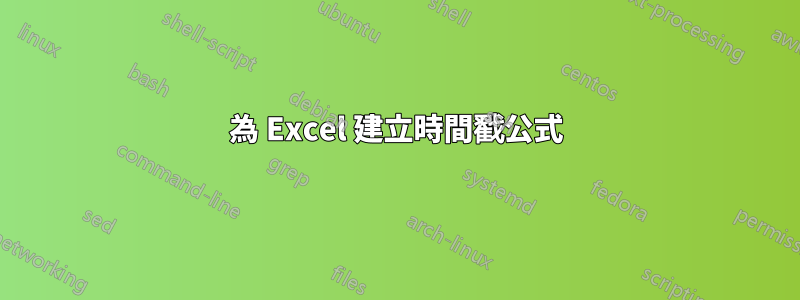
這個想法很簡單,我想要一個可以執行類似操作的函數=MOD_DATE_OF(A1:A4),當修改此範圍內的任何單元格時,我分配該公式的單元格將獲取當前日期。
我在網路上發現了一些類似的問題,甚至這裡,但他們都沒有相當。
我得到的最接近的是某處的這段程式碼(抱歉,丟失了原始碼):
Private Sub Worksheet_Change(ByVal Target As Excel.Range)
If Target.Column = 1 Then
Target.Offset(0, 1).Value = Date
End If
End Sub
但它仍然不是一個功能..
我使用的是 Office 2010 中的 Excel
謝謝
答案1
這是一個成熟的解決方案,可讓您監控不同範圍的變更日期。請注意,這使用了來自的函數Chip Pearson 在 VBA 中使用陣列的工具和功能從堆疊溢位用戶托馬斯的回答。
基本概念是全域數組,其中儲存所有監視範圍(過去或現在)的位址及其最近更新日期,允許函數和 Worksheet_Change Sub 進行互動。 Worksheet_Change Sub 透過對照所有儲存的範圍檢查更改的範圍來更新此陣列。此函數在陣列中尋找監視範圍,如果找到則傳回儲存的變更日期。否則,它將返回今天的日期(然後將其添加到數組中)。
此外,為了防止在關閉工作簿和釋放時間戳數組時丟失時間戳,必須在 Workbook_Close 事件上將數組寫入工作表,然後在 Workbook_Open 事件上將其重寫到數組。
在模組中,貼上以下程式碼。
Public funcInstances() As Variant
Public Function MOD_DATE_OF(monitor As Range)
Application.Volatile True
Dim i As Long
Dim tmpArray() As Variant
If Not IsDimensioned(funcInstances) Then
ReDim funcInstances(1 To 1, 1 To 2) As Variant
funcInstances(1, 1) = monitor.Address
funcInstances(1, 2) = Date
Else
For i = 1 To UBound(funcInstances, 1)
If funcInstances(i, 1) = monitor.Address Then
MOD_DATE_OF = Format(funcInstances(i, 2), "yyyy-mm-dd")
Exit Function
End If
Next i
tmpArray = ExpandArray(funcInstances, 1, 1, "")
Erase funcInstances
funcInstances = tmpArray
funcInstances(UBound(funcInstances, 1), 1) = monitor.Address
funcInstances(UBound(funcInstances, 1), 2) = Date
End If
MOD_DATE_OF = Format(funcInstances(UBound(funcInstances, 1), 2), "yyyy-mm-dd")
End Function
'ExpandArray() is the work of Chip Pearson. Code copied from http://www.cpearson.com/excel/vbaarrays.htm
Function ExpandArray(Arr As Variant, WhichDim As Long, AdditionalElements As Long, _
FillValue As Variant) As Variant
'''''''''''''''''''''''''''''''''''''''''''''''''''''''''''''''''''''''''''''''''
' ExpandArray
' This expands a two-dimensional array in either dimension. It returns the result
' array if successful, or NULL if an error occurred. The original array is never
' changed.
' Parameters:
' --------------------
' Arr is the array to be expanded.
'
' WhichDim is either 1 for additional rows or 2 for
' additional columns.
'
' AdditionalElements is the number of additional rows or columns
' to create.
'
' FillValue is the value to which the new array elements should be
' initialized.
'
' You can nest calls to Expand array to expand both the number of rows and
' columns. E.g.,
'
' C = ExpandArray(ExpandArray(Arr:=A, WhichDim:=1, AdditionalElements:=3, FillValue:="R"), _
' WhichDim:=2, AdditionalElements:=4, FillValue:="C")
' This first adds three rows at the bottom of the array, and then adds four
' columns on the right of the array.
'
'''''''''''''''''''''''''''''''''''''''''''''''''''''''''''''''''''''''''''''''''
Dim Result As Variant
Dim RowNdx As Long
Dim ColNdx As Long
Dim ResultRowNdx As Long
Dim ResultColNdx As Long
Dim NumRows As Long
Dim NumCols As Long
Dim NewUBound As Long
Const ROWS_ As Long = 1
Const COLS_ As Long = 2
''''''''''''''''''''''''''''
' Ensure Arr is an array.
''''''''''''''''''''''''''''
If IsArray(Arr) = False Then
ExpandArray = Null
Exit Function
End If
'''''''''''''''''''''''''''''''''
' Ensure the dimension is 1 or 2.
'''''''''''''''''''''''''''''''''
Select Case WhichDim
Case 1, 2
Case Else
ExpandArray = Null
Exit Function
End Select
''''''''''''''''''''''''''''''''''''
' Ensure AdditionalElements is > 0.
' If AdditionalElements < 0, return NULL.
' If AdditionalElements = 0, return Arr.
''''''''''''''''''''''''''''''''''''
If AdditionalElements < 0 Then
ExpandArray = Null
Exit Function
End If
If AdditionalElements = 0 Then
ExpandArray = Arr
Exit Function
End If
NumRows = UBound(Arr, 1) - LBound(Arr, 1) + 1
NumCols = UBound(Arr, 2) - LBound(Arr, 2) + 1
If WhichDim = ROWS_ Then
'''''''''''''''
' Redim Result.
'''''''''''''''
ReDim Result(LBound(Arr, 1) To UBound(Arr, 1) + AdditionalElements, LBound(Arr, 2) To UBound(Arr, 2))
''''''''''''''''''''''''''''''
' Transfer Arr array to Result
''''''''''''''''''''''''''''''
For RowNdx = LBound(Arr, 1) To UBound(Arr, 1)
For ColNdx = LBound(Arr, 2) To UBound(Arr, 2)
Result(RowNdx, ColNdx) = Arr(RowNdx, ColNdx)
Next ColNdx
Next RowNdx
'''''''''''''''''''''''''''''''
' Fill the rest of the result
' array with FillValue.
'''''''''''''''''''''''''''''''
For RowNdx = UBound(Arr, 1) + 1 To UBound(Result, 1)
For ColNdx = LBound(Arr, 2) To UBound(Arr, 2)
Result(RowNdx, ColNdx) = FillValue
Next ColNdx
Next RowNdx
Else
'''''''''''''''
' Redim Result.
'''''''''''''''
ReDim Result(LBound(Arr, 1) To UBound(Arr, 1), UBound(Arr, 2) + AdditionalElements)
''''''''''''''''''''''''''''''
' Transfer Arr array to Result
''''''''''''''''''''''''''''''
For RowNdx = LBound(Arr, 1) To UBound(Arr, 1)
For ColNdx = LBound(Arr, 2) To UBound(Arr, 2)
Result(RowNdx, ColNdx) = Arr(RowNdx, ColNdx)
Next ColNdx
Next RowNdx
'''''''''''''''''''''''''''''''
' Fill the rest of the result
' array with FillValue.
'''''''''''''''''''''''''''''''
For RowNdx = LBound(Arr, 1) To UBound(Arr, 1)
For ColNdx = UBound(Arr, 2) + 1 To UBound(Result, 2)
Result(RowNdx, ColNdx) = FillValue
Next ColNdx
Next RowNdx
End If
''''''''''''''''''''
' Return the result.
''''''''''''''''''''
ExpandArray = Result
End Function
'IsDimensioned() is the work of StackOverflow user @Thomas. Code copied from https://stackoverflow.com/a/5480690/657668
Public Function IsDimensioned(vValue As Variant) As Boolean
On Error Resume Next
If Not IsArray(vValue) Then Exit Function
Dim i As Integer
i = UBound(vValue)
IsDimensioned = Err.Number = 0
End Function
在對應的工作表模組中,貼上以下程式碼。
Private Sub Worksheet_Change(ByVal Target As Range)
Application.EnableEvents = False
Dim j As Long
If IsDimensioned(funcInstances) Then
For j = 1 To UBound(funcInstances, 1)
If Not Intersect(Target, Range(funcInstances(j, 1))) Is Nothing Then
funcInstances(j, 2) = Date
End If
Next j
Me.Calculate
End If
Application.EnableEvents = True
End Sub
最後,在 ThisWorkbook 模組中貼上以下程式碼:
Private Sub Workbook_BeforeClose(Cancel As Boolean)
If IsDimensioned(funcInstances) Then
Application.ScreenUpdating = False
'Store array on a new temporary and hidden worksheet.
Dim tmpS As Worksheet, tmpR As Range
Set tmpS = Worksheets.Add
tmpS.Name = "TEMP Record of Timestamps"
tmpS.Visible = xlSheetHidden
Set tmpR = tmpS.Range("A1:B1").Resize(UBound(funcInstances, 1), 2)
tmpR.Value = funcInstances
ThisWorkbook.Save
Application.ScreenUpdating = True
End If
End Sub
Private Sub Workbook_Open()
Dim ws As Worksheet, tstamps As Range
Dim wsfound As Boolean
wsfound = False
Application.ScreenUpdating = False
For Each ws In ThisWorkbook.Worksheets
If ws.Name = "TEMP Record of Timestamps" Then
wsfound = True
Exit For
End If
Next ws
If wsfound Then
Set tstamps = ws.UsedRange
funcInstances = tstamps.Value
Application.DisplayAlerts = False
ws.Delete
Application.DisplayAlerts = True
End If
Application.ScreenUpdating = True
End Sub
對於偶然發現此頁面的任何人請注意:許多評論都是關於以前的、不完整的解決方案,所以不要被它們迷惑。


